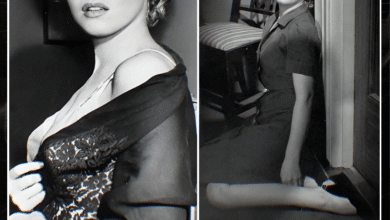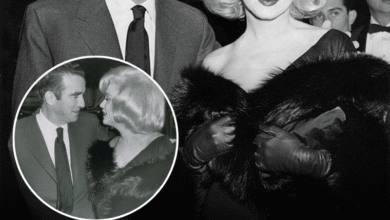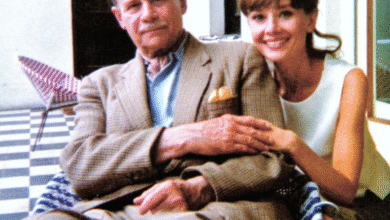Angelina Jolie Redefines “Diva” – How Her Maria Callas Role Challenges Negative Stereotypes
OPINION: This article may contain commentary which reflects the author's opinion.
In her 2024 role as legendary opera singer Maria Callas in the biographical film Maria, Angelina Jolie took on the challenge of not only portraying the complexity of a woman ahead of her time but also reexamining the term “diva.” Often used with negative connotations, the word “diva” has historically been associated with demanding, temperamental behavior—traits that are frequently attributed to women in the public eye. Jolie, however, used her portrayal of Callas to challenge these perceptions, emphasizing the importance of viewing women like Callas with a more nuanced understanding.
A New Perspective on the “Diva” Label
At the Venice Film Festival in August 2024, Jolie shared her thoughts on her character and the term “diva.” Reflecting on how her portrayal of Callas reshaped her understanding of the word, she remarked, “I’ve relearned that word from Maria, I have a new relationship to it. It’s often other people’s perception of a woman that defines too much who she is and who she was. I think Maria was one of the hardest working people who didn’t hurt anybody.” These words reveal Jolie’s effort to reclaim the term “diva,” offering a fresh perspective that focuses on the dedication, hard work, and passion behind Callas’s career, rather than the superficial judgment often placed upon public figures, particularly women.
Jolie’s portrayal of Callas—set in the final days of the opera singer’s life in 1970s Paris—delves deep into Callas’s identity, legacy, and the personal struggles she faced. The film, directed by Pablo Larraín, explores Callas as she grapples with societal expectations, public scrutiny, and her own sense of self. In doing so, Jolie’s performance pushes back against the reductionist view that has often boxed women like Callas into the “diva” stereotype.
Challenging the Negative Connotations of “Diva”
In pop culture, the term “diva” has frequently been used to describe women who are perceived as difficult or overly demanding, with the word often being deployed as a form of criticism. The portrayal of divas in media—ranging from celebrities in reality TV shows to viral TikTok memes—has perpetuated the stereotype of a woman who demands attention at any cost. Yet, through Maria, Jolie seeks to challenge this negative connotation.
By focusing on Callas’s dedication to her craft, Jolie highlights the reality behind the public image of the diva: an artist who poured her heart and soul into her performances, facing immense pressure and personal sacrifice to achieve greatness. As she pointed out, “It’s often other people’s perception of a woman that defines too much who she is.” This statement underscores how Callas’s legacy—and the legacies of many women—has often been shaped by the perceptions of others rather than by their own actions or character.
Public and Critical Reception of Maria
The film Maria, while praised for its portrayal of Callas’s emotional complexity, has generated mixed reactions from critics. Many have lauded Jolie’s performance, recognizing her ability to capture the multifaceted nature of Callas, a woman known for both her musical genius and her public persona. Her depiction of the opera singer’s vulnerability, resilience, and inner turmoil adds depth to the character, making Callas’s life story more relatable and humanized.
However, the film itself has received some criticism for its narrative choices, with some critics arguing that the plot lacks depth and fails to fully explore the emotional layers of Callas’s journey. Nonetheless, Jolie’s perspective on the “diva” label and her portrayal of Callas offer a new way to appreciate the complexity of women in the public eye, suggesting that their identities should not be reduced to mere caricatures of demand and drama.
A Broader Discussion of Gender and Public Perception
Jolie’s comments about Callas and the term “diva” spark a broader conversation about how women, particularly in the entertainment industry, are often defined by others’ perceptions rather than by their own lived experiences. Women in the spotlight, from singers to actresses to politicians, frequently face the burden of being labeled in ways that their male counterparts rarely do. The double standard often requires them to be both ambitious and humble, successful but not too assertive, popular but not too dominant.
Through Maria, Jolie not only honors Callas’s legacy but also advocates for a reevaluation of how society perceives women in the public eye. By challenging the negative connotations of “diva,” she opens the door for a more nuanced understanding of women’s contributions and complexities, reminding audiences that true greatness often comes with personal sacrifice, vulnerability, and the kind of hard work that’s rarely seen behind the scenes.
Conclusion: A Reclamation of Power
Angelina Jolie’s portrayal of Maria Callas in Maria offers more than just a performance; it represents a powerful reclamation of the “diva” label. By humanizing Callas and focusing on her relentless commitment to her art, Jolie invites viewers to reconsider the term “diva” as something other than a pejorative. In doing so, she not only challenges societal expectations but also underscores the complexity and resilience of women who have often been mischaracterized in history. Through this portrayal, Jolie proves that behind every “diva” is a woman who, just like Callas, deserves to be remembered for her talent, perseverance, and integrity—not just her public image.


